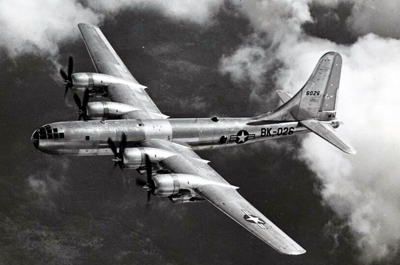
Boeing B-50A Superfortress, #46-020, crashed on March 23, 1950, north of the small desert towns of Hyder and Dateland in southwestern Arizona
SUMMARY: The B-50 Superfortress, also known as "The Long Ranger" (a reference to the bomber's nearly 5,000 mile flight range) by the nose-art stenciled below the cockpit windows, departed Davis-Monthan AFB in Tucson at 6:15 am for a routine training mission that involved navigation, aerial refueling and camera gunnery training. After transferring 870 gallons of fuel to a KB-29 over Yuma, the crew pressurized the cabin and began to climb to 20,000 feet. While climbing through 17,000 feet, at about 8:15 am, the master fire warning light suddenly illuminated on the pilot's instrument panel as the right scanner simultaneously reported a fire streaming from Number 3 engine. There were three successive minor explosions that rolled the bomber onto a 45 degree angle right bank. With the right wing engulfed in flames, the ship then fell into a steep right turn and began to disintegrate. As the bomber broke apart in the sky, only two men of the crew of fourteen were able to escape- the co-pilot, Lt. William Gentry, and bombardier, Captain John Lee. Wreckage was spread over a two-mile area of remote desert terrain. The investigation disclosed that Engine Number 3 had been replaced the prior day. It was determined that the cause of the fire was from the exhaust clamp that failed on Engine Number 3, and allowed hot exhaust gas to ignite fuel which had seeped past the fire seal into the engine section. The source of the fuel was likely from the loose-fitting main fuel line at the inlet side of the engine-driven fuel pump. The crew: Lt/ Col. Harold Mignola, instructor pilot; 1st Lt. Robert Stephenson, pilot (aircraft commander); 1st Lt William Gentry, co-pilot; Captain Fred Smith, navigator; Captain John Lee, bombardier; 1st Lt. Newell Shepherd, bombardier; Captain Paul McPherson, observer; T/Sgt Cecil Horton, flight engineer, T/Sgt Lewis Womble, flight engineer; Corporal James Jones, gunner; S/Sgt Raymond Darby, gunner; Sgt. William Stovall, gunner; Private Manford Doughty, gunner; Corporal Melvin Gelino, radio operator. |
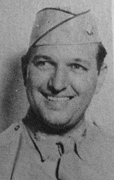 |
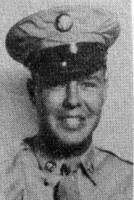 |
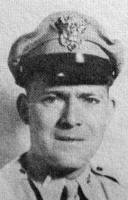 |
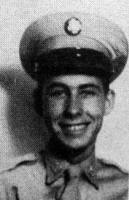 |
| From left, 36 year-old Lt/Col. Harold Mignola, commander of the 65th Bomber Squadron and Instructor Pilot; 25 year-old Staff Sergeant Raymond Darby, Gunner; 27 year-old 1st Lt. Robert Stephenson, Pilot; and 20 year-old Sergeant William Stovall, Gunner. Most of the 14 man crew had served in the Air Corps during WWII, including Mignola, Darby and Stephenson. | |||
 |
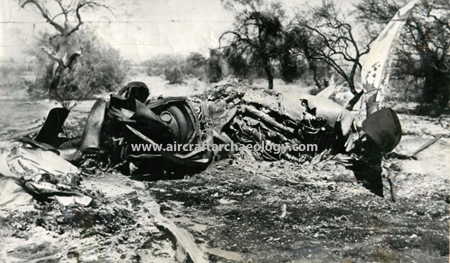 |
| An original photo of the fuselage. | An original photo showing one of the B-50's burned powerplants; a P&W R-4350 engine and propellors. |
|
|
|
|
|
| A rusted and bent .50 cal ammunition cannister. | Avionics components | A steel support brace | Miscellaneous gears and components remain where a part of the bomber came down. |
|
|
|
|
|
| A type of 'jack-screw' likely used for the raising/ lowering of flaps, landing gear, vents, etc.. | More scattered debris on the desert floor. | Relay assembly box. | Scattered debris. |
|
|
|
|
|
| Firewall, steel supports, debris. | .50 cal ammo chute and landing gear component. | Could be part of a firewall. | Ultraviolet cockpit light assembly. |
|
|
|
|
|
| Headstamp- 'Salt Lake 1943' .50 caliber brass casing. | Brass casing. | More molten debris | Large steel support |
|
|
|
| A completely flattened oxygen cylinder | More scattered debris |